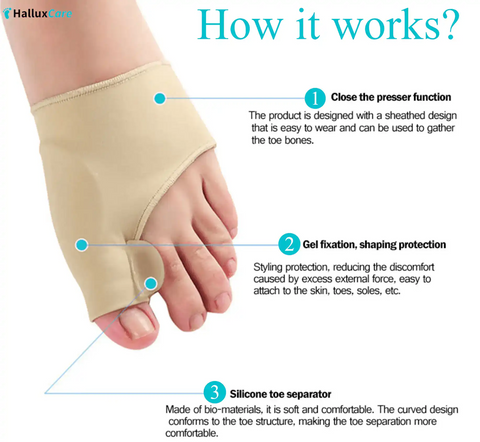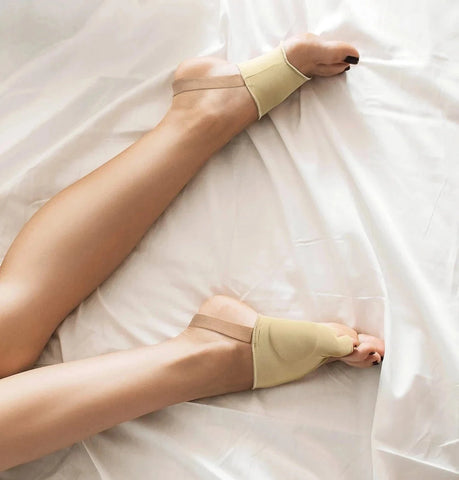Last Updated: 2025-09-10 | Author: Dr. Jamie Harris, DPM (Board-Certified Podiatric Surgeon)
Bunion surgery is a common procedure for relieving persistent foot pain and correcting deformity, but the road to recovery can be unexpectedly complex. Many patients, as seen in online support groups and forums like Reddit, express concerns about lingering swelling, pain during walking, and even back discomfort possibly related to surgical hardware. If you’re searching for evidence-based guidance on bunion surgery recovery, managing post-op swelling, or understanding hardware complications, you’ve come to the right place.
Why Does Hardware Affect Your Back After Bunion Surgery?
Expert Insight
According to the American Orthopaedic Foot & Ankle Society (AOFAS), surgical hardware such as screws or plates are often used to stabilize the bones after bunion correction (AOFAS, 2023)[^1]. While these devices are generally safe, they can sometimes affect foot mechanics, leading to unexpected symptoms elsewhere in the body.
Key Biomechanical Factors
- Biomechanical Changes: Surgical hardware can subtly alter the way your foot absorbs shock, potentially affecting your overall posture and gait.[^2]
- Compensatory Movements: If your foot is stiff or painful, you may unconsciously change how you walk, putting extra strain on your lower back and knees. Dr. Paul Langer, DPM, notes that altered biomechanics post-surgery can contribute to musculoskeletal complaints above the foot.[^3]
- Nerve Irritation: Hardware can, in rare cases, irritate nearby nerves, causing pain that radiates up the kinetic chain, including the back.
Key Takeaway:
If you experience new back pain after bunion surgery, especially after hardware placement, report it to your orthopedic surgeon or podiatrist promptly. A tailored assessment can help determine if hardware is affecting your gait or posture.
4.9 ⭐⭐⭐⭐⭐ ( 1843 reviews )
What to Expect During Recovery After Hardware Removal
Many patients wonder, “How bad is recovery after the hardware is removed?” While every recovery is unique, medical literature provides helpful guidelines (Mayo Clinic, 2024)[^4]:
Typical Recovery Timeline
- First Few Days: Expect mild discomfort and swelling. Keep weight off the affected foot as much as possible.
- 1–2 Weeks: Pain generally lessens. Start gentle movement and prescribed exercises.
- 4–6 Weeks: Most patients return to normal activities, though some swelling or stiffness may persist.
Practical Tips for a Smoother Recovery
- Follow Post-op Instructions: Adhere to your surgeon’s guidance on icing, elevation, and wound care.
- Physical Therapy: Engage in exercises to restore strength and flexibility. The American Academy of Orthopaedic Surgeons (AAOS) recommends supervised rehabilitation for optimal outcomes.[^5]
- Supportive Devices: Consider orthopedic sleeves for added comfort, compression, and swelling reduction.
Dealing with Persistent Swelling and Pain After Minimally Invasive Bunion Surgery
It’s not uncommon for swelling and discomfort to linger for several weeks or even months post-surgery. According to the Cleveland Clinic, swelling can last up to six months or longer in some cases.[^6]
Real-World Applications & Tips
- Wear Proper Footwear: Choose wide, supportive shoes with soft soles to reduce pressure on the healing area.
- Use Bunion Relief Products: Medical-grade bunion sleeves can provide gentle compression and support for daily comfort.
- Monitor Your Symptoms: Keep a log of pain, swelling, and any new symptoms to share with your provider.
When to Seek Medical Attention
- Increasing Pain or Redness: Could indicate infection or hardware problems.
- Numbness or Tingling: May suggest nerve involvement.
- Prolonged Swelling: If swelling lasts beyond three months, schedule a follow-up for further evaluation (AAOS, 2024)[^5].
Proactive Steps for a Smoother Bunion Surgery Recovery
- Stay Active (but Safe): Gentle walking and movement help circulation and healing.
- Massage and Moisturize: Regular massage and moisturization (with products such as castor oil) can keep tissues supple and reduce scar formation.
- Use Orthopedic Supports: Bunion sleeves and toe spacers provide daily relief and prevent further irritation.
Key Takeaways
- Hardware from bunion surgery can affect gait and contribute to back pain; prompt evaluation is important.
- Recovery after hardware removal is generally mild, but individual experiences vary—follow your provider’s instructions carefully.
- Persistent swelling and discomfort beyond 3 months require further assessment.
- Supportive footwear, physical therapy, and orthopedic devices can improve comfort and mobility.
- Always consult your surgeon or podiatrist if you experience new or worsening symptoms.
FAQs
Q: How long does swelling typically last after bunion surgery?
A: Swelling can persist for several weeks to months, sometimes up to six months or longer, depending on the individual and surgical technique.[^6]
Q: Is hardware removal painful?
A: Most patients experience mild to moderate discomfort after hardware removal, which usually resolves within a few days to weeks with proper care.[^4]
Q: When should I worry about back pain after bunion surgery?
A: If back pain starts after surgery or worsens, especially if it limits your activity, consult your provider. Changes in gait or posture can sometimes contribute to back pain post-surgery.[^2]
Q: Can I use bunion sleeves during recovery?
A: Yes, medical-grade bunion sleeves can provide comfort, reduce swelling, and support proper foot alignment, but always check with your surgeon before using any device post-operatively.
Explore HalluxCare Bunion Relief Solutions
If you're looking for relief from bunion pain, consider using the Orthopedic Bunion Pain Relief & Correction Sleeve, which provides support and helps to alleviate discomfort.
For additional protection, the Tailor's Bunion Bunionette Pain Relief Protection Sleeves are designed to offer comfort and protection for bunionette pain.
To nourish and soothe the skin around bunions, as well as to promote healthy hair, consider the Jamaica Black Castor Oil Soothing Oil. Known for its moisturizing and anti-inflammatory properties, it helps alleviate discomfort around bunions and supports hair growth and scalp health.
Join the Conversation
Have you experienced unexpected symptoms—like back pain or prolonged swelling—after bunion surgery? What strategies helped you the most? Share your story or questions below to help others navigating similar challenges!
References
- American Orthopaedic Foot & Ankle Society. Bunion Surgery. AOFAS Patient Resource (2023).
- Thomas JL, et al. "Biomechanical Consequences of Bunion Surgery." Foot & Ankle International, 2019.
- Langer, P. "Postoperative Gait Alterations and Musculoskeletal Pain." Podiatric Medicine Update, 2022.
- Mayo Clinic Staff. "Bunion Surgery: What to Expect." Mayo Clinic (2024).
- American Academy of Orthopaedic Surgeons. "Care After Foot and Ankle Surgery." AAOS OrthoInfo (2024).
- Cleveland Clinic. "Bunion Surgery Recovery." Cleveland Clinic Health Library (2024).
Ready to share your experience? Let us know in the comments: What has been the biggest surprise or challenge in your bunion surgery recovery?




